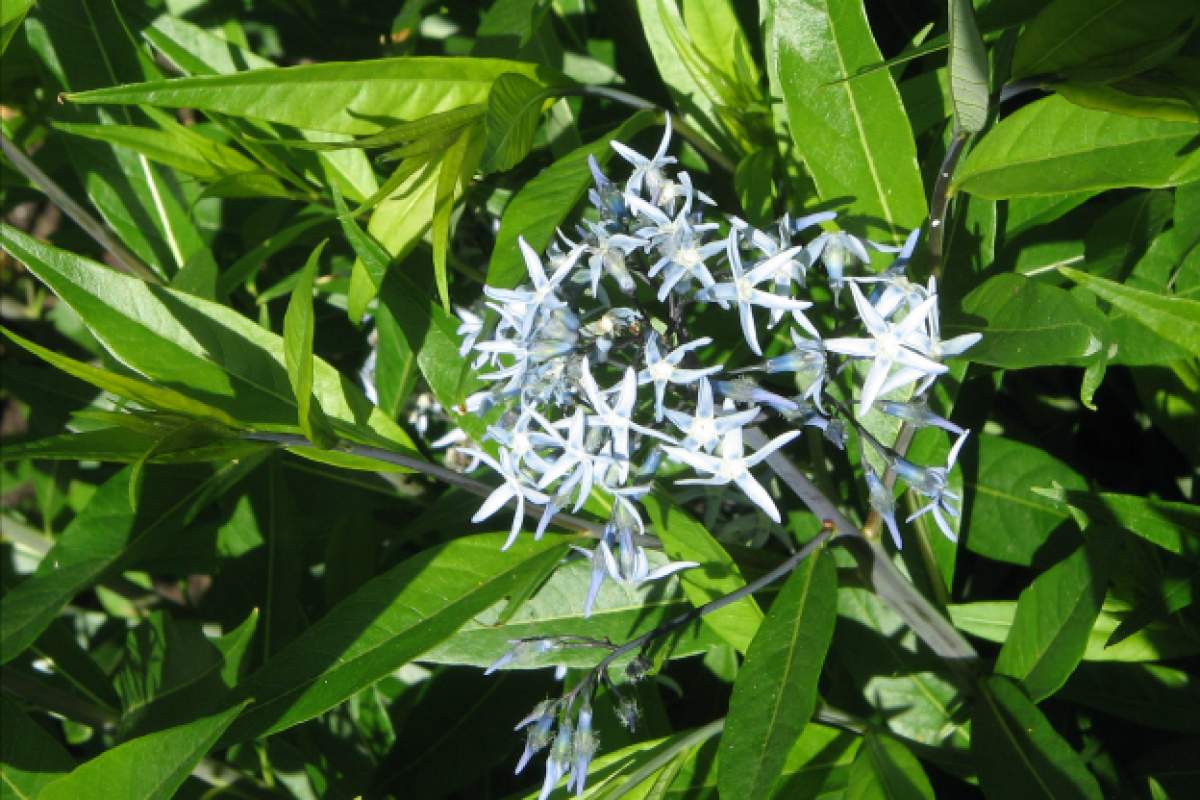
Amsonia species are perennials or sub-shrubs, and there are about 20 species in this genus.
While the small, star-shaped, late spring to summer flowers are quite pretty, they don't last long, and it's the brilliant yellow fall foliage that makes most gardeners want to grow one of the amsonias.
A common name is dogbane. There are three that are native to North America and that are recommended for home gardens:
- Â A. ciliata grows one to three feet tall and forms one-foot wide clumps. It has attractive thread-like leaves that turn yellow in autumn, as well as pale blue tiny half-inch early summer flowers.
It and A.hubrectii both do well in zones 5 to 9.
- Â A. hubrectii is two to three feet tall and forms clumps that are three- to four-feet wide. It has very narrow leaves that look a little like a willow, and they turn a golden yellow in the fall. Its blooms are larger, about two to three inches wide and a very pale blue in summer.
- The amsonia with the widest range grows in zones 3 to 9 and is native to the eastern United States. It has the longest name, tabernaemontana, which trips endlessly off the tongue. It forms two- to three-feet wide clumps, tiny blue spring blooms and has lance-shaped leaves that turn buttery yellow each fall.
All amsonias like moist soil.
In my Midwestern garden the yellow foliage is a welcome accent in the late autumn landscape.









